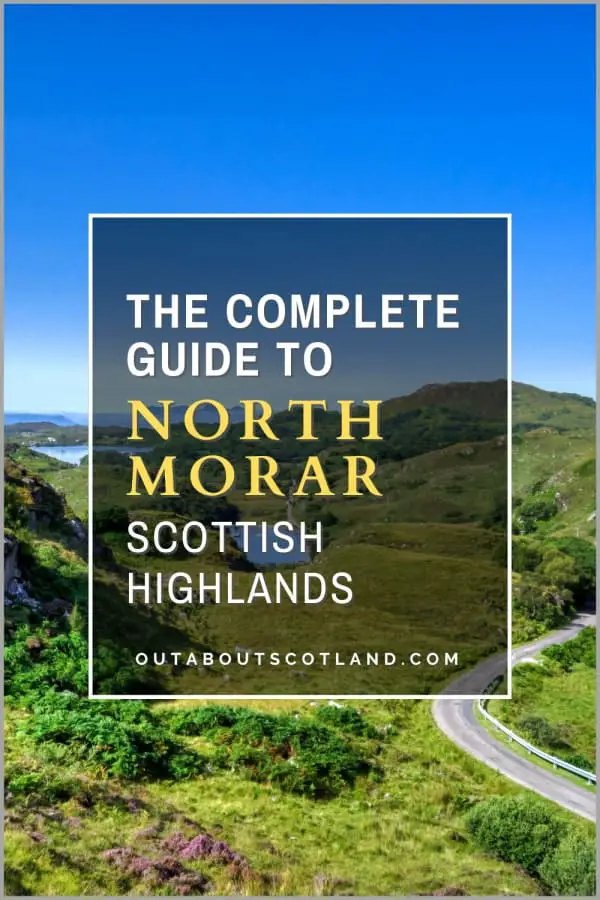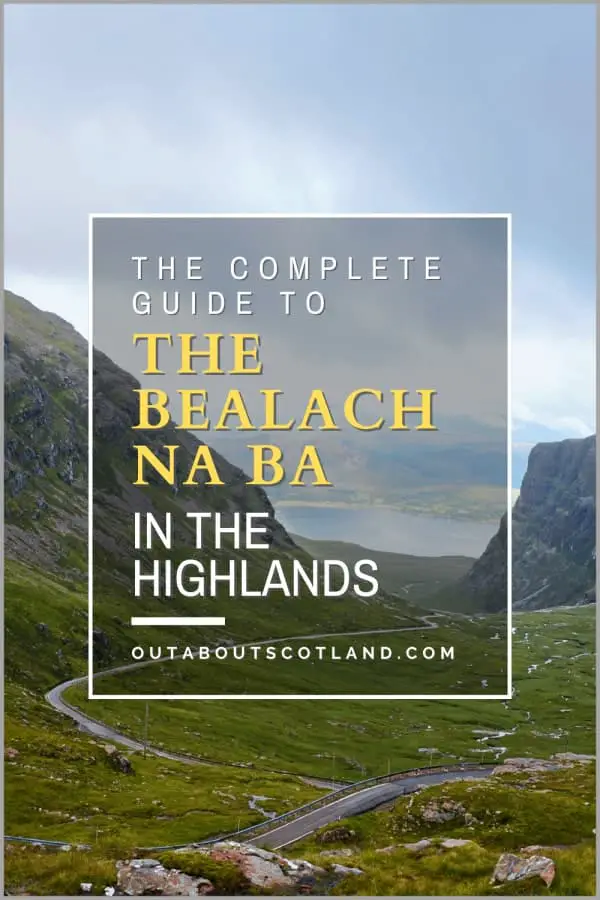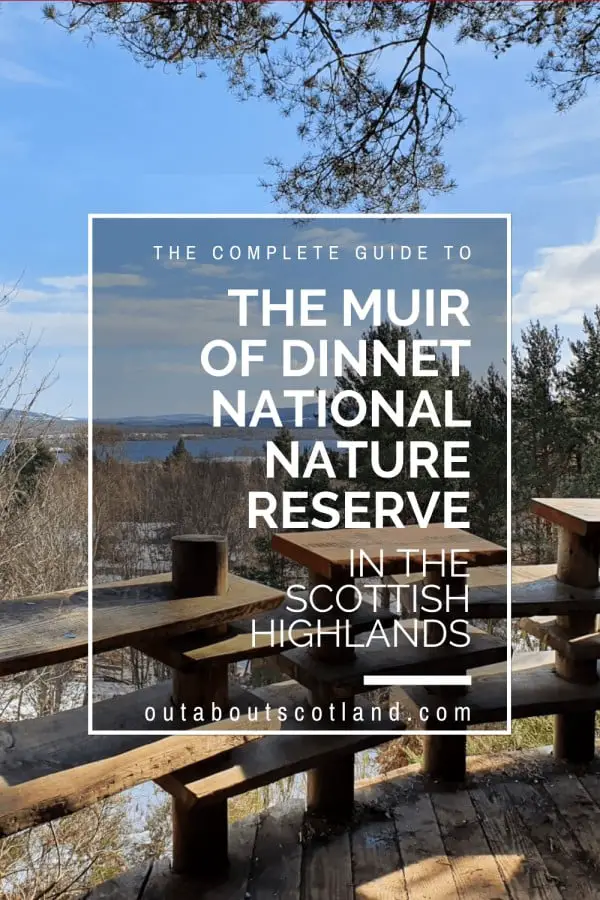The Muir of Dinnet is a national nature reserve located on the eastern border of Cairngorms National Park in the Scottish Highlands. The reserve has a variety of habitats, including heath, woodland, and wetland, but it’s best known for ‘The Vat’, a gorge formed by glaciers over 10,000 years ago.
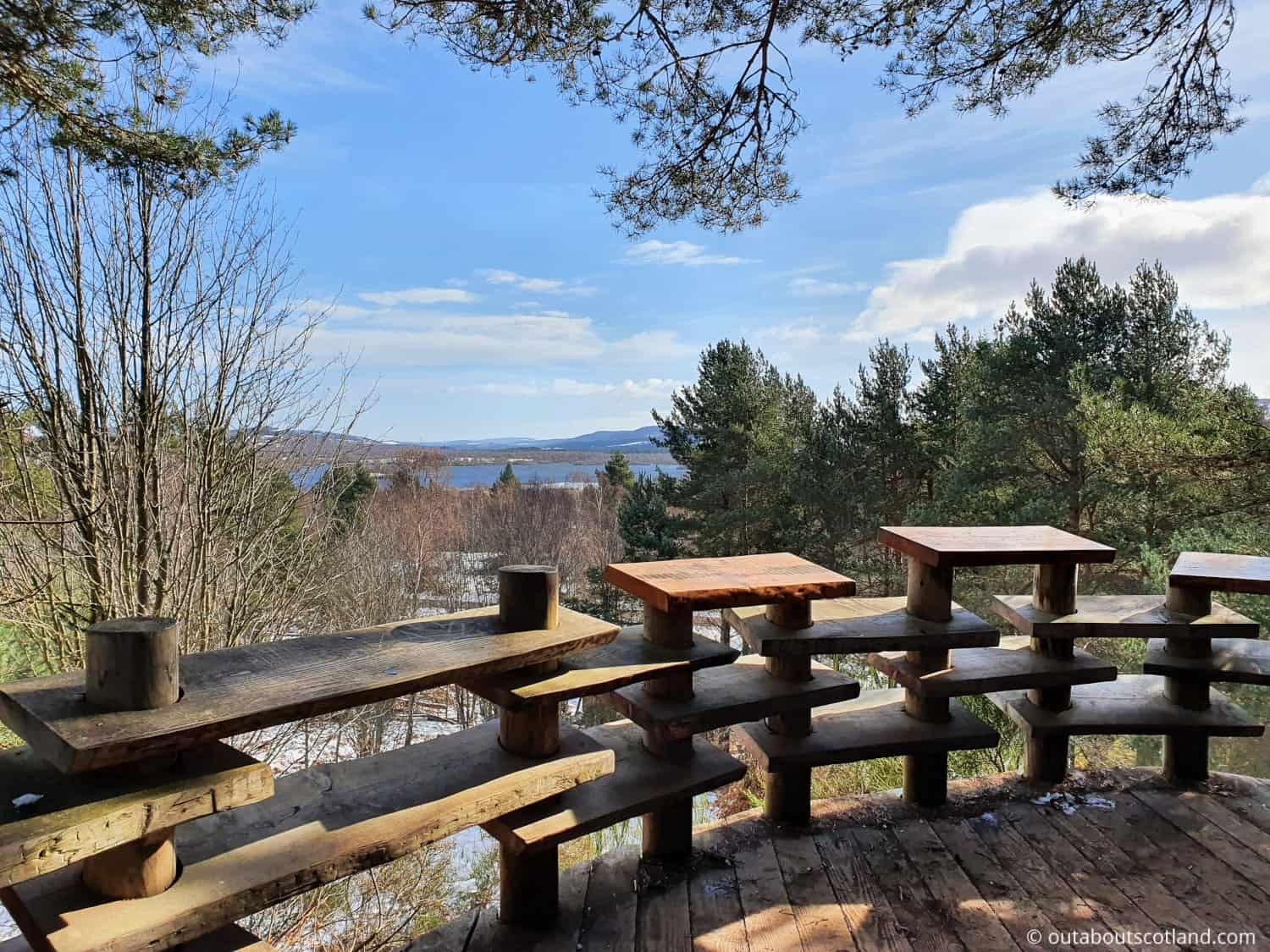
| Address: | Burn O’Vat Visitor Centre, Dinnet, Aboyne, Aberdeenshire, AB34 5NB |
| Opening Hours: | Nature reserve open 24/7. The visitor centre is open 9 am to 5 pm (between Easter and October) and 10 am to 4 pm the rest of the year. |
| Admission Price: | Free |
| Parking: | Free on-site car park |
| Contact: | 01339 881667 nnr@nature.scot |
| Facilities: | Toilets, visitor centre |
| Photos: | Virtual Tour YouTube Video |
Overview
The Muir of Dinnet National Nature Reserve is one of the most popular woodland areas in the Cairngorms. This picturesque area is home to a variety of wildlife habitats, and a walk along any of the four main pathways will take you through a combination of heathlands, bogs, woodlands, and grasslands.
The reserve is easy to get to by car, so if you’re heading there from the direction of Aberdeen, follow the A93 to Ballater, which passes through the quaint Highland village of Dinnet. From there, it’s a 2.5-mile drive to the Vat o’ Burn visitor centre where you’ll be able to park up and set out on foot to explore the natural attractions in the area.
First, I recommend taking a look inside the visitor centre to discover exactly what this nature reserve is all about. Its history stretches back thousands of years – over 10,000, in fact – to the time when glaciers covered this entire region of Scotland.
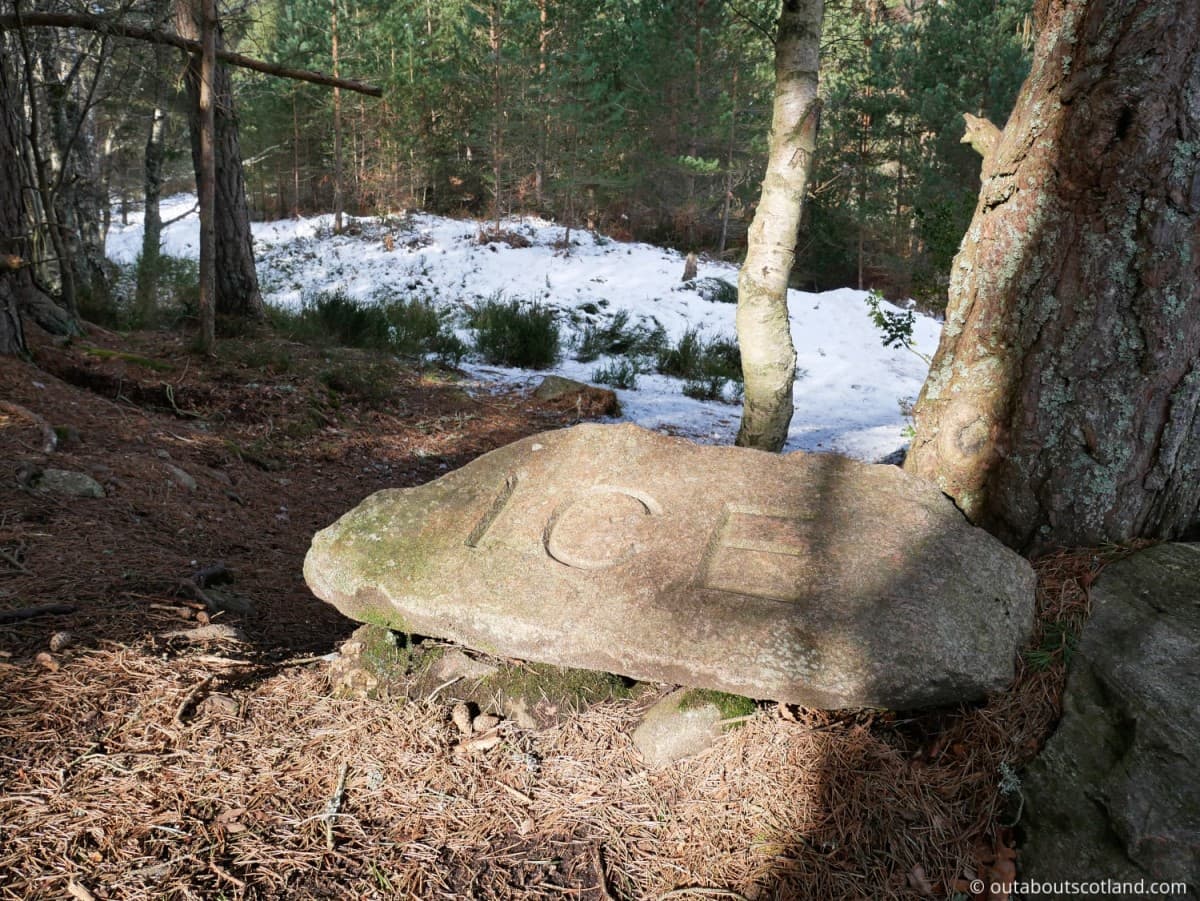
As the massive ice sheets gouged their way across the landscape, they created a deep gulley, which is where you’ll find the Vat Burn, while two remnants of the melting glaciers formed the two lochs – Loch Kinord and Loch Davan – that are now home to a variety of animal and insect species. Thanks to the water being so clear, the light manages to reach all the way to the bottom, so these lochs have incredibly rich ecosystems.
You’ll see birds flitting about and hear the buzzing thrum of dragonflies in summer, while the colder months offer wintering birds a much-needed refuge from the freezing conditions of the Highlands. If you’re a keen birdwatcher, take a pair of binoculars and head down to Loch Kinord, where there’s a good chance you’ll see teal, tufted ducks, and greylag geese, and you might even see a goldeneye duck or two, which is one of the rarest breeding birds in Scotland.
The northern edge of Loch Kinord features one of the best-preserved examples of a Celtic cross in Scotland, which is one of several signs that people have lived at the site for thousands of years. The other major tell-tale indicator that ancient tribespeople lived in the Muir of Dinnet is a small man-made island to the northwest of the loch.
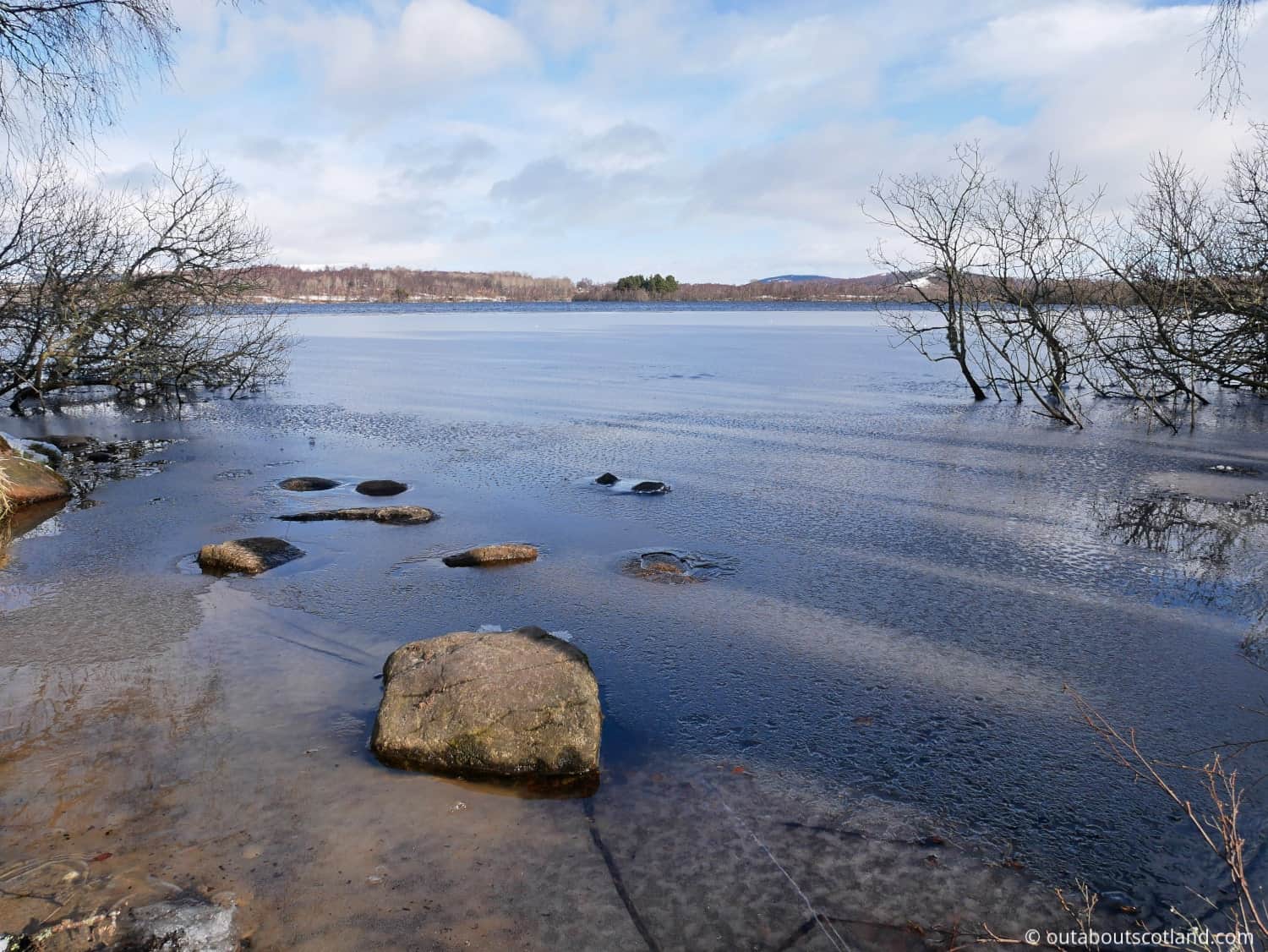
Stop Painful Blisters Spoiling Your Time In Scotland
- Deep cushioning to relieve pressure and prevent painful rubbing
- Hydrocolloid active gel technology creates an optimal healing environment for foot blisters
- Adhesive, tapered edges so Compeed flexes with movement and won't rub off
- Keeps natural moisture in and germs out, with translucent edges to help blend in with the skin
- It prevent, ease the pain, and make a recovery faster
The Highlights
1: The Muir of Dinnet is home to a wide variety of wildlife habitats, so it’s a great place to take your camera. You’ll walk through heaths and mixed woodland, as well as grasslands and the occasional bog.
2: The Burn o’ Vat visitor centre has lots of information about the local area, and it tells the story of how Ice Age glaciers carved their way through the landscape. There are picnic benches there too, so it makes the perfect spot to take a break from walking around the nature reserve.
3: All four signposted trails that run through the reserve are lovely, but I have to recommend the trail that circles around Loch Kinord, as it offers an easy-going walk in a particularly beautiful setting.
Visiting Tips
1: The nearest shops are in Ballater, which is 7 miles to the west. This is the best place to stock up on supplies if you’re thinking of having a picnic in the Muir of Dinnett. Alternatively, drive to Dinnet village where you’ll find a hotel (Loch Kinord Hotel) that serves bar meals.
2: Make the most of your time at the reserve by picking up one of the free trail maps from the visitor centre. First, walk the short 3/4-mile ‘Vat trail’ to see the reserve from a raised viewpoint, then join any of the other trails. They vary in length between two and four miles and are mostly well-maintained, though perhaps not suitable for wheelchairs or pushchairs.
3: If you’d like a longer walk, you can join the trail that runs from the Muir of Dinnet to Cambus o’ May, which is a nearby forest circling a hill with outstanding viewpoints from the top.

Protect Your Family From Scotland's Biting Midges
- Powerful, reliable protection for up to 8 hours
- Water- and sweat resistant
- Repels midges, mosquitoes, horse flies, sand flies, fleas and ticks
- Safe for use on adults, children over 30 months and pregnant women
- Non-sticky, moisturising with a pleasant fragrance
- Packaging may vary
Tourist Information
There are four main trails that can be followed from the Muir of Dinnett visitor centre: the Vat trail, Parkin’s Moss trail, Little Ord trail, and the Loch Kinord trail. During my visit, I managed to follow the Vat trail and the Loch Kinord trail, as well as take a short jaunt along the other two, and I’m happy to report they all offer a different but equally enjoyable experience.
From the visitor centre, I suggest picking up one of the free maps which has a handy route planner, but while you’re there, you may as well take a look at the Burn o’ Vat as it’s only 3/4 mile from the car park.
The ‘Vat’ is a sizable cauldron-shaped gorge with sheer granite walls, located next to a raised viewpoint overlooking the reserve. You can see Loch Kinord and the surrounding forest from the raised platform, and if you follow the engraved wooden panels, you’ll be able to identify the mountains rising in the distance.
After you’ve soaked up the scenery I suggest returning to the visitor centre where you’ll find picnic benches and toilets, and then following the path across the road that will take you through thick woodland to the start of the trail that circles the larger of the two lochs. This walk is the longest of the four at four miles, and it’s quite rough in places due to the muddy bogs that line the path. If you’re visiting in the summer, it’s not so bad, but on my last wintry visit, the path had several large muddy pools blocking the way.
It would be easy to spend all day in the Muir of Dinnett nature reserve, but keen walkers will no doubt be itching to give their boots a good workout elsewhere. If you fall into that category, you could do a lot worse than join the trail that leads from the northern edge of the Vat Burn to the forest of Cambus o’ May where you’ll find untouched pine forests bordered by Deeside’s stunning mountain ranges.
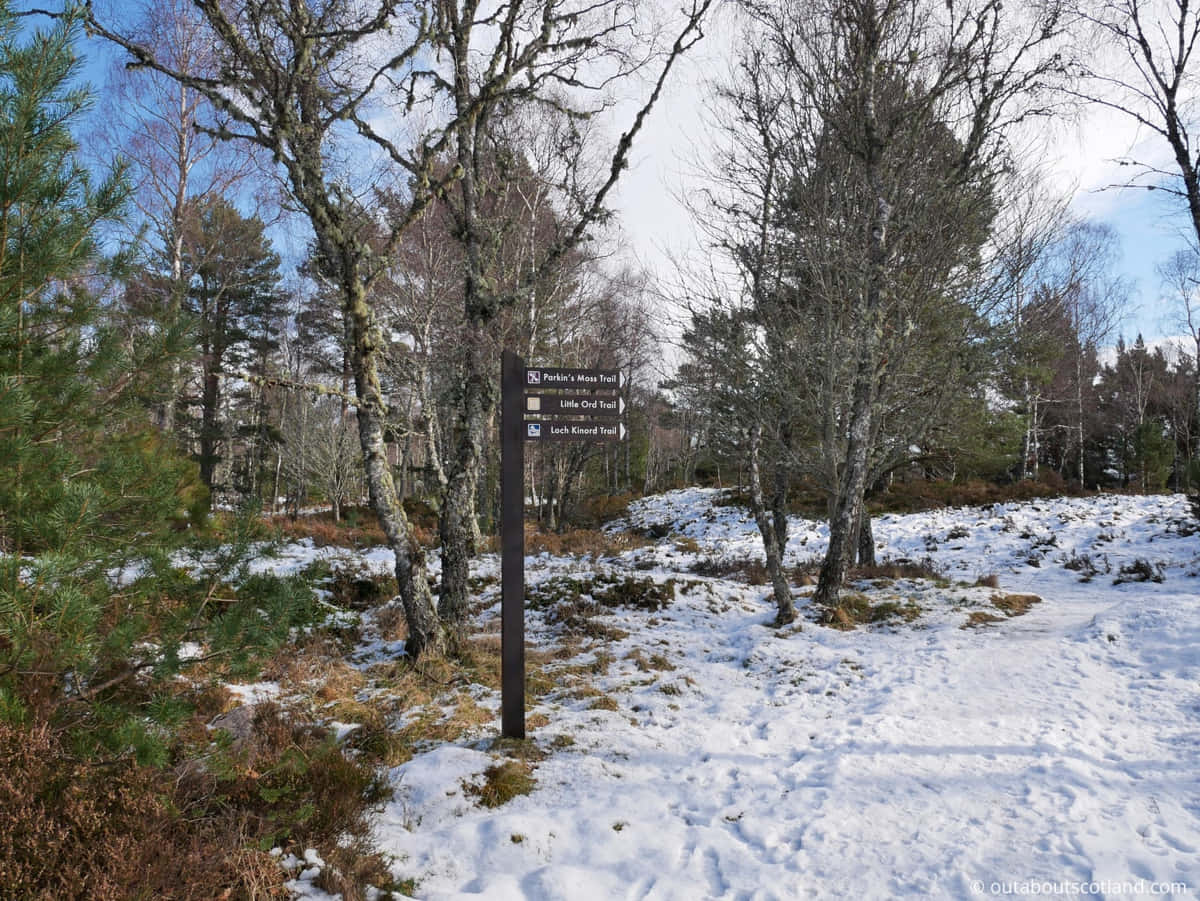
Things to Do
Hike the Trails: Explore the natural beauty of the Muir of Dinnet by hiking one of its many trails. The Burn O’Vat trail offers a fascinating experience inside a giant pot-shaped hole carved out by ice, while the Loch Kinord Trail is a lovely 4-mile circular walk around the loch where there’s a good chance of spotting wildlife such as red squirrels and roe deer.
Bird Watching: The reserve’s diverse habitats attract a plethora of bird species. Take a pair of binoculars (link to binocular reviews) and keep watch from the bird hides at Loch Davan and Loch Kinord where you can spot ospreys, greylag geese, curlews and many other types of birds.
Photography: With its stunning landscapes, unique geology, and diverse wildlife, the Muir of Dinnet is a paradise for photographers. Capture the sunrise over Loch Kinord, the dramatic rock formations of the Burn O’Vat, or the delicate wildflowers in the woodland glades. Every season brings a new palette of colours and subjects to photograph.
Picnic by the Loch: Pack a picnic and enjoy a leisurely lunch by the tranquil shores of Loch Kinord. There are several picnic sites where you can spend an afternoon soaking up the sun, reading a book, and enjoying the serene views.
Historical Exploration: Immerse yourself in history by visiting the ancient Kinord Cross Pictish Stone. The stone dates from around 800AD and features some of the best-preserved carvings from the era.
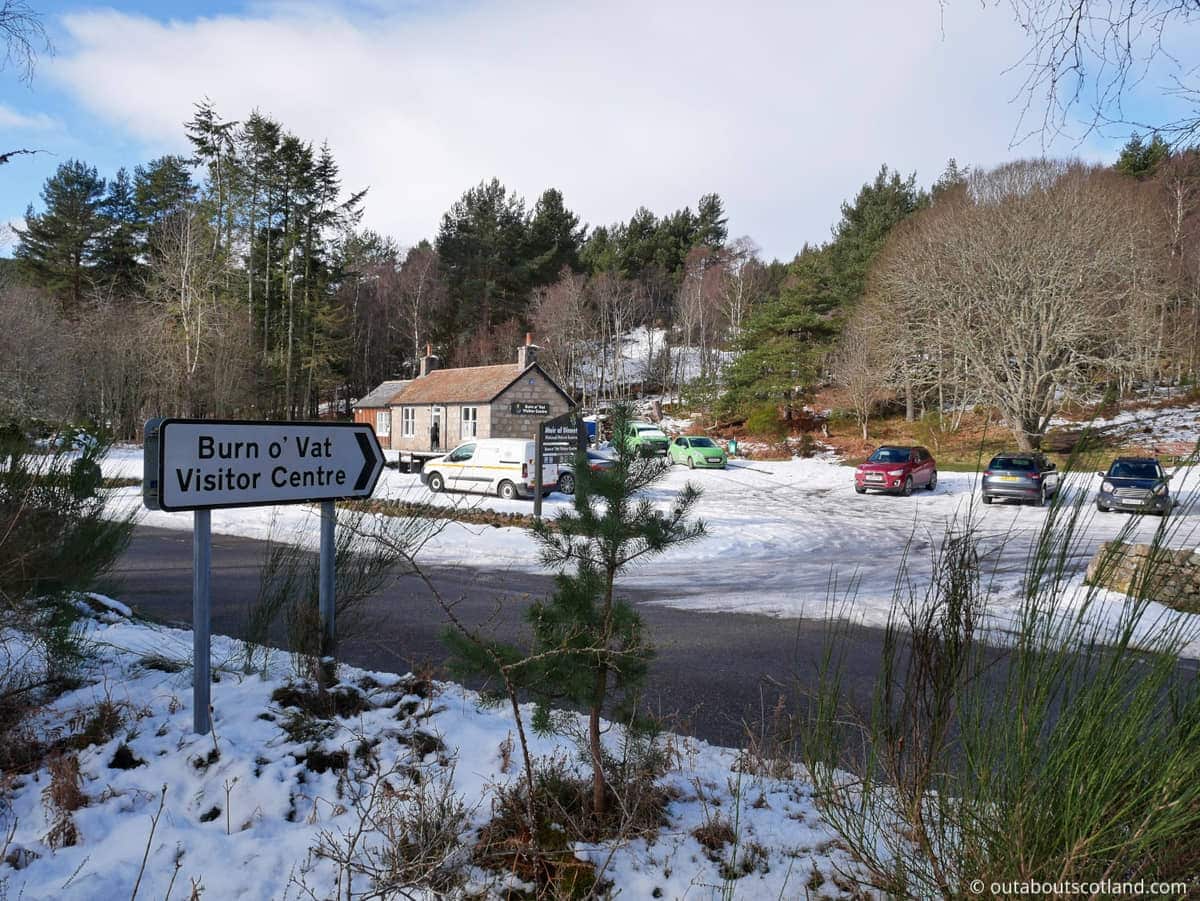
Stop Painful Blisters Spoiling Your Time In Scotland
- Deep cushioning to relieve pressure and prevent painful rubbing
- Hydrocolloid active gel technology creates an optimal healing environment for foot blisters
- Adhesive, tapered edges so Compeed flexes with movement and won't rub off
- Keeps natural moisture in and germs out, with translucent edges to help blend in with the skin
- It prevent, ease the pain, and make a recovery faster
Things to Do Nearby
The Queen’s View, Tarland. 4TJ, B9119, Aboyne. 14-minute drive.
A viewing platform with scenic views across the Aberdeenshire countryside that’s said to be a favourite with royalty (King Charles said it is one of his most-loved views).
Culsh Earth House. B9119, Aboyne AB34 4SY. 12-minute drive.
A 2,000-year-old subterranean stone-lined passage that is in remarkably well-preserved condition. Its use is unknown but it was possibly used in ancient rituals. Access is from the B9119.
Tomnaverie Stone Circle. Tarland, Aboyne AB34 4YQ. 8-minute drive.
An ancient stone circle that marks a burial cairn that is at least 4,500 years old. The surrounding landscape has several smaller stone cairns of the same age. Access is possible from the B9094 which is a short distance away.
Glen Tanar National Nature Reserve. Aboyne AB34 5EU. 18-minute drive.
Highly-rated nature reserve in the middle of the Cairngorms. Glen Tanar has myriad paths running through the forest and it is a much-used weekend destination for walkers and cyclists. Wildlife spotters should keep their eyes open for capercaillies and golden eagles.
Dess Waterfall. Dess Burn, Aboyne AB34 5BB. 17-minute drive.
Popular waterfall located on Dess Burn. A path from Kincardine O’Neil offers visitors a lovely countryside walk.
Frequently Asked Questions
Can you swim in Loch Kinord?
It is not advisable to swim in Loch Kinord. The loch has occasional blooms of toxic blue-green algae which is unsafe to swim in. The loch is also part of a national nature reserve, and entering the water will disturb the wildlife.
How long is the walk around Loch Kinord?
The Loch Kinord circuit is 4 miles in length which will take around 2 hours to walk.
What animals are in the Muir of Dinnet?
The Muir of Dinnet National Nature Reserve is home to a variety of wildlife such as red deer, roe deer, foxes, and otters. Various bird species also inhabit the area including ospreys, golden eagles, black grouses, and various waterfowl. If you’re lucky, you might also spot a red squirrel or a pine marten.
Is Loch Kinord dog-friendly?
Yes, Loch Kinord is dog-friendly and it’s a great place for a walk with your furry friend. However, please remember to keep your dog on a leash, especially during the bird nesting season to protect the local wildlife. Don’t forget to clean up after your dog to keep the place clean for other visitors.
Protect Your Family From Scotland's Biting Midges
- Powerful, reliable protection for up to 8 hours
- Water- and sweat resistant
- Repels midges, mosquitoes, horse flies, sand flies, fleas and ticks
- Safe for use on adults, children over 30 months and pregnant women
- Non-sticky, moisturising with a pleasant fragrance
- Packaging may vary




